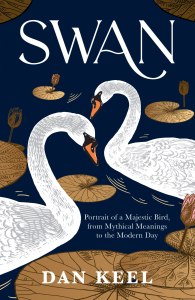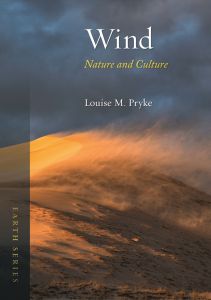As usual, I have scoured the catalogues for all the books that pique my attention I only managed to find 16 catalogues this time, so this may be updated as the others are published. So without further ado, here are the books:
Bloomsbury
Vulture Capitalism – Grace Blakeley
How To Be A Citizen – C.L. Skatch
Wild Service – Nick Hayes
Cold Kitchen – Caroline Eden
On This Holy Island – Oliver Smith
Cypria – Alex Christofi
The Tomb Of The Mili Mongga – Samuel Turvey
Warming Up – Madeline Orr
Potholes & Pavements – Laura Laker
Groundbreakers – Chantal Lyons
Cull Of The Wild – Hugh Warwick
Wild Woman – Philippa Forrester
Stowaway – Joe Shute
Bodley Head
Great Britain?: How To Get Our Future Back – Torsten Bell
Canongate
Poyums – Len Pennie
Between Britain: Walking The History Of England And Scotland – Alistair Moffat
We Are Electric; The New Science Of Our Body’S Electrome – Sally Adee
Your Wild And Precious Life: On Grief, Hope And Rebellion – Liz Jensen
The Laws Of Connection: The Transformative Science Of Being Social – David Robson
Chatto & Windus
Not The End Of The World: How We Can Be The First Generation To Build A Sustainable Planet – Hannah Ritchie
Chelsea Green
Hedgelands – Christopher Hart
Duckworth
The Lost Carving: A Journey To The Heart Of Making – David Esterley
The Case For Nature: Pioneering Solutions For The Other Planetary Crisis – Siddarth Shrikanth
Understorey: A Year Among Weeds – Anna Chapman Parker
Elliott & Thompson
Sunken Lands – Gareth E. Rees
In All Weathers – Matt Gaw
The Way Through The Woods – Rebecca Beattie
Infinite Life – Jules Howard
This Allotment – Ed. Sarah Rigby
Radical Rest – Evie Muir
A Day In The Life Of The Green Economy – Dharshini David
The Centre Must Hold – Ed. Yair Zivan
Eye Books
Local – Alastair Humphreys
Faber & Faber
The Rising Down: Lives In An East Sussex Landscape – Alexandra Harris
How To Win An Information War: The Propagandist Who Outwitted Hitler – Peter Pomerantsev
The Vast Extent – Lavinia Greenlaw
The City Of Today Is A Dying Thing – Des Fitzgerald
Back To The Local – Maurice Gorham & Edward Ardizzone
Blossomise – Simon Armitage Ill. Angela Harding
Fitzcarraldo Editions
The Observable Universe – Heather Mccalden
Granta
All Before Me: A Search For Belonging In Wordsworth’S Lake District – Esther Rutter
The Flitting – Ben Masters
Headline
Who Owns This Sentence? – David Bellos And Alexandra Montagu
Kersten’s Lists – François Kersaudy
A History Of The World In 47 Borders – Jonn Elledge
Lvoe Ii – Atticus Poetry
Return Of The Aubergine – Sophie Grigson
Hurst
The Algorithm: How Ai Can Hijack Your Career And Steal Your Future – Hilke Schellmann
Orwell’S Ghosts: Wisdom And Warnings For The 21St Century – Laura Beers
Sorry For The Inconvenience But This Is An Emergency: The Nonviolent Struggle For Our Planet’S Futur – Lynne Jones
The Great Indian Food Trip: Around A Subcontinent À La Carte – Zac O’Yeah
Italy In A Wineglass: The Taste Of History – Marc Millon
Jonathan Cape
Rapture’s Road – Seán Hewitt
The Book Forger – Joseph Hone
Ruin, Blossom – John Burnside
The Book-Makers: A History Of The Book In 18 Remarkable Lives – Adam Smyth
The Roads To Rome: A History – Catherine Fletcher
Little Toller
Set My Hand Upon The Plough – Enid Barraud
Octopus Books
I Can Hear the Cuckoo – Kiran Sidhu
Oneworld
Who Owns The Moon? :In Defence Of Humanity’S Common Interests In Space – A.C. Grayling
Profile Books
Exhausted: An A–Z For The Weary – Anna Katharina Schaffner
The House Divided: Sunni, Shia And Conflict In The Middle East – Barnaby Rogerson
The Language Puzzle: How We Talked Our Way Out Of The Stone Age – Steven Mithen
The Return Of The Grey Partridge Restoring Nature On The South Downs – Roger Morgan-Grenville And Edward Norfolk
Possible: 16 Ways To Net Zero – Chris Goodall
In The Long Run The Future As A Political Idea – Jonathan White
The High Seas: Ambition, Power And Greed On The Unclaimed Ocean – Olive Heffernan
Rumbles: A Curious History Of The Gut – Elsa Richardson
The New Breadline: Hunger And Hope In The Twenty-First Century – Jean-Martin Bauer
Amuse Bouche: How To Eat Your Way Around France – Carolyn Boyd
The Accidental Garden – Richard Mabey
Quercus
Four Shots In The Night – Henry Hemming
Riding Route 66: Find Myself On America’S Mother Road – Henry Cole
My Family And Other Seedlings: A Year On A Dorset Allotment – Lally Snow
Reaktion Books
Saving The World: How Forests Inspired Global Efforts To Stop Climate Change From 1770 To The Present – Brett M. Bennett And Gregory A. Barton
All Mapped Out: How Maps Shape Us – Mike Duggan
Behind The Privet Hedge: Richard Sudell, The Suburban Garden And The Beautification Of Britain – Michael Gilson
Who Killed Cock Robin?: British Folk Songs Of Crime And Punishment – Stephen Sedley And Martin Carthy
Riverrun
Every Living Thing: The Great And Deadly Race To Know All Life – Jason Roberts
Salt
Shadow Lines – Nicholas Royle
Sort Of Books
Cairn – Kathleen Jamie
There are some really good books coming out and if I had to say which one I am most excited about it would have to be Kathleen Jamie’s.
Any here that you like the look of? Let me know in the comments below.
















Recent Comments